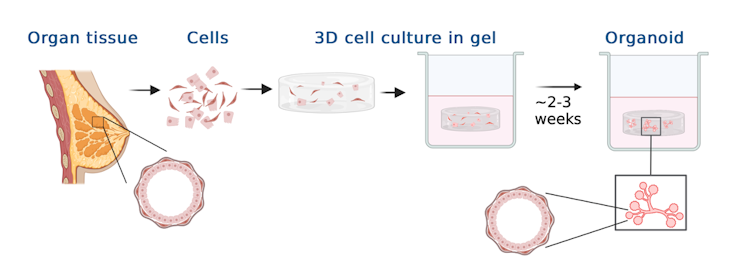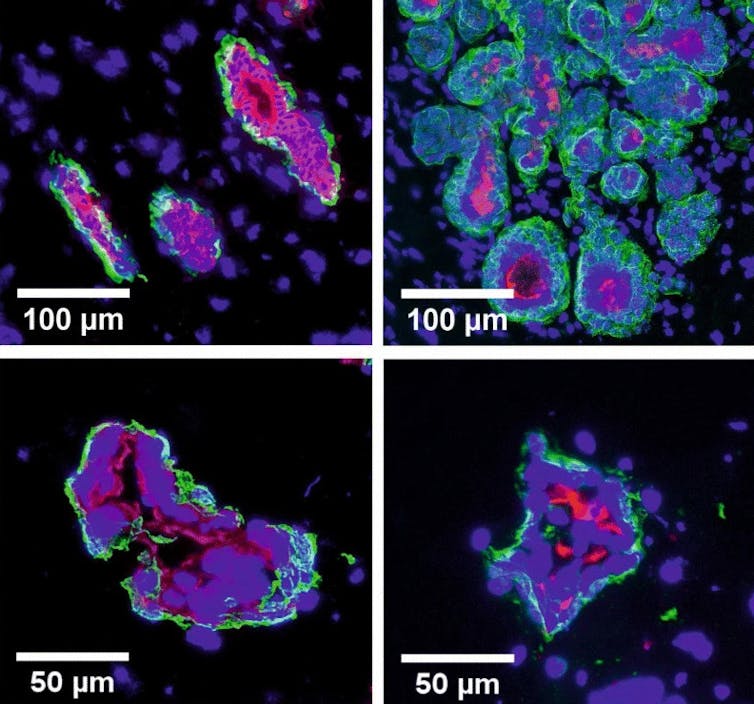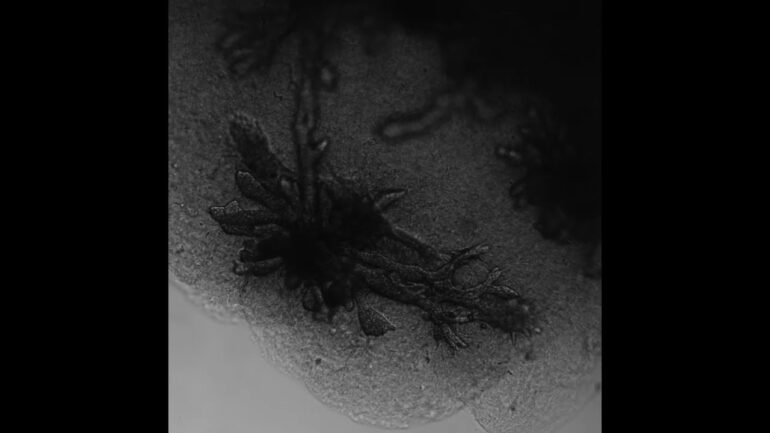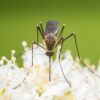All mammals have mammary glands that produce milk, a feature that has fascinated scientists for many years. Questions such as why mammary glands evolved in the first place, how they have adapted across different species and what unique evolutionary pressures shaped their development remain largely unanswered.
To investigate how various species have evolved unique solutions to biological challenges, my team at the Rauner Lab of Tufts University School of Medicine is recreating mammalian diversity in a dish through miniature versions of mammary glands – organoids. These models can shed light on the fundamental biological processes behind milk production, tissue regeneration and the early stages of breast cancer development.
What are organoids?
Organoids are miniature, 3D structures grown in a cell culture dish that mimic the structure and function of real organs. These models are made by guiding stem cells, which have the unique ability to differentiate into various types of cells, to form specific types of organ cells.
While they are not exact miniature replicas of full-size organs, organoids contain enough cells and tissue architecture to recreate the environment and key functions of the organ they model. For example, a mammary gland organoid or a breast tissue organoid are composed of tiny elongated ducts that terminate in a spherical structure, mimicking the milk ducts and alveoli of the gland’s tissue.

Breast organoids mimic the structure and function of actual tissues.
Gat Rauner/Created with BioRender.com, CC BY-SA
Organoids provide a powerful tool for biomedical research because they offer a 3D representation of an organ’s structure and function. Unlike traditional 2D cell cultures, organoids can mimic the complexity of actual tissues, including their architecture and diverse cell types. This enables researchers to study complex biological processes such as tissue development, regeneration and disease progression, in a controlled environment, while reducing reliance on animal models.
Mammalian diversity in a dish
Researchers have traditionally used organoids to model human diseases, test drugs and study developmental biology. However, their potential extends far beyond these applications, particularly in the field of evolutionary biology.
My research focuses on generating mammary gland organoids from a variety of mammalian species. Mammals are incredibly diverse, with each species adapted to a wide range of environments and lifestyles. The mammary gland, essential for nurturing offspring, exhibits significant variation across species.

These breast organoids (bottom) resemble human breast biopsies (top) in cell type and architecture.
Goldhammer 2019/Breast Cancer Research, CC BY
For instance, monotremes such as the platypus and echidna belong to a unique and ancient class of mammals. Monotremes diverged from other mammalian groups…



